Students who took Professor Elizabeth Herbin-Triant’s course “Slavery in US History & Culture” during the Fall 2021 semester visited the Archives & Special Collections to explore primary sources related to slavery. This blog post is by student Anna Kruesel ’22, who chose to focus on a single letter from the Israel E. Trask Papers. The original letter is in Box 1, folder 12 of the Trask collection; a complete transcription of this letter is available here: Israel Trask to Eliza December 1827
There is something to be said of holding a letter written by an enslaver who is detailing the operations of his cotton plantation in your own hands. It was an unsettling experience, yet I was excited to engage with history in a way that I had never done before. The red wax seal on the letter was still intact as if it could simply be dropped off at the post office and sent to its intended recipient. Little did Israel Trask know that the love letters he wrote to his wife, Eliza, would be scrutinized by history students to reckon with the racial history of Amherst College. The primary source I have chosen to analyze is from the Israel E. Trask Papers located at the Amherst College Archives, and it is a correspondence between husband and wife, Israel and Eliza Trask, dated December 5th, 1827.
Israel Elliot Trask was born in Brimfield, Massachusetts in 1777. He owned several plantations in Mississippi and Louisiana, and he had enslaved over 250 people. Israel also served as a trustee and founder of Amherst College from 1821 until he died in 1835. Israel made financial contributions to the College’s Charity Fund and played an integral role in securing Amherst College’s charter from the Massachusetts legislature.
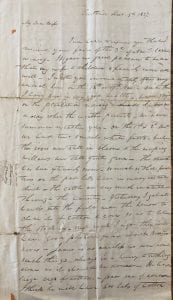
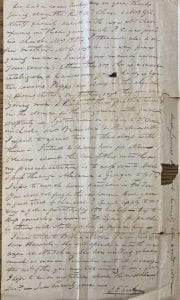
On December 5th, 1827, Israel E. Trask wrote a letter to his wife, Eliza C. Trask, who was residing at their home in Springfield, Massachusetts. Israel, however, wrote this letter while visiting and overseeing the operations of his cotton plantation in Mississippi. Israel describes the unwavering beauty of the plantation to his wife, writing “the roses are still in bloom & the weeping willows are still quite green.” This description is a salient example of the romanticization of the plantation that many Americans engaged in (and still do). Israel evokes the beauty and blissful charm of his property, while simultaneously ignoring the racial violence that has taken place on the plantation. Israel then reminds his wife to keep warm during the harsh winter months in New England and to ask Mr. Day to get 150 bushels of charcoal for the fireplaces in their Springfield home. Rather endearingly, Israel ends the initial portion of the letter to his wife with “I am sincerely yours.”
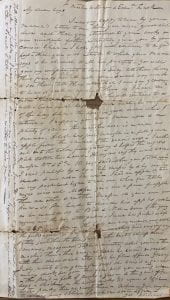
In the next portion of the letter, Israel addresses his two sons, William and Edward: “My Dear boys, I was very happy to hear by your mama’s letter to me that you were good children and that you attended to your books.” Israel, a father beaming with pride, reminds his two boys to be obedient and listen to what their “mama” has to say. Israel then shares a story from his day on the plantation with William and Edward. The letter reads: “I walked out in the cotton field yesterday & helped the negroes pick cotton [for] two hours. The negroes say they want to see Massa [William] & [Edward]… I had an apple or two in my pocket & began to eat one, when one little negro cries out Massa give me a piece of apple then another and another do give me a piece. So Pa had to divide his apple just as he would do to Bill & Ned. Some of the young negroes are the best cotton pickers. Isaac had picked as high as 245 lbs in a day.” This moment is jarring, transitioning from applauding his children on their schoolwork to picking cotton with enslaved children without warning. Israel’s language conveys indifference towards the humanity of enslaved people. Yet, he simultaneously compares them to his two sons, “Bill & Ned.” Israel’s comparison of his two sons to the enslaved children he owned embodies paternalism, as he is actively invoking his role as a father to both his children and slaves—he even goes so far as to call himself “Pa.”
Historian Eugene Genovese places paternalism at the center of the master-slave relationship. Paternalism functions as a power dynamic in which people in positions of authority (i.e., enslavers) restrict the freedoms and autonomy of those subordinate to them (i.e., enslaved people) because it is in the supposed best interest of the subordinate. Genovese describes slavery as a paternalistic institution in which enslavers took a personal interest in the lives of the enslaved people they owned. Moreover, Genovese characterizes the plantation (and all its inhabitants, both Black and white) as a single, cohesive household: “Slowly, the reality of the plantation as household induced a sensibility expressed in the language of ‘family’” (Genovese, Fatal Self-Deception, 25). As evident in his letter, Israel sees himself as the father figure of the plantation, clearly using the language of the family. It is also important to note that the enslaved people that Israel owned knew the names of his two sons, indicating that the enslaved people had met William and Edward previously, or Israel had mentioned them before. Regardless, the naming of William and Edward suggests closeness and familiarity between the enslaved and the family of the enslaver. The enslaved children Israel interacts with even refer to Israel’s two sons as “Massa.” The title of “Massa,” however, is reserved exclusively for Israel and his biological sons. Furthermore, Genovese states, “Slaves became quasi-kin… [Enslavers] called slaves ‘my children,’ and slaves called them ‘father.’” In his letter, Israel does not directly refer to his slaves as “my children” per se. Rather, Israel describes how he gave an apple to an enslaved child just as he would to his own two sons. However, this reading that Genovese provides is rather generous. Was it truly the case that Israel Trask cared about the enslaved people he owned for any reason other than what profits he could extract from them? Can a cohesive “household” truly exist under such conditions?
Israel’s behavior in the cotton field is perhaps better described by historian James Oakes, stating that “southern paternalism rested on the assumption that slaves were too valuable a ‘species of property’ not to be cared for adequately” (Oakes, Reviews in American History, 2010). Enslavers did not proclaim their responsibility to care for the well-being of the enslaved people they owned. Instead, Oakes describes the economic calculus that enslavers developed to “obtain from his slaves labor and increase.” Israel was not motivated to share his apple because of his fatherly obligation to the enslaved people he owned; instead, Israel was motivated to share his apple because of “materialistic paternalism.” Israel realized that he could bolster his profits “by taking a few simple steps to improve the food, clothing, and shelter of [his] slaves.” As evidenced in his letter, Israel is quite cognizant of profits and productivity. Following the description of sharing an apple with enslaved children, Israel shares Isaac’s productivity metric, stating that “Isaac had picked as high as 245 lbs in a day.” Israel’s incentive becomes quite clear. Profit, not paternalism, motivates Israel’s “kindness.”
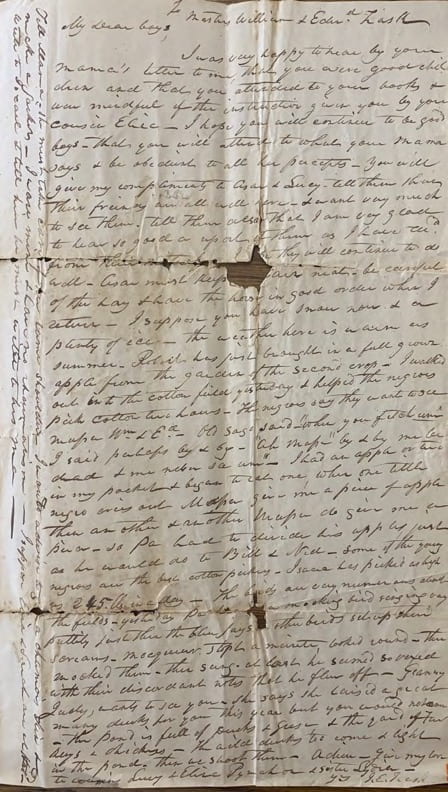
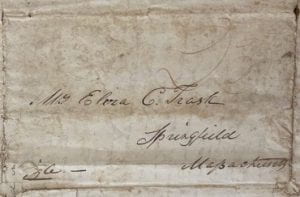
You must be logged in to post a comment.